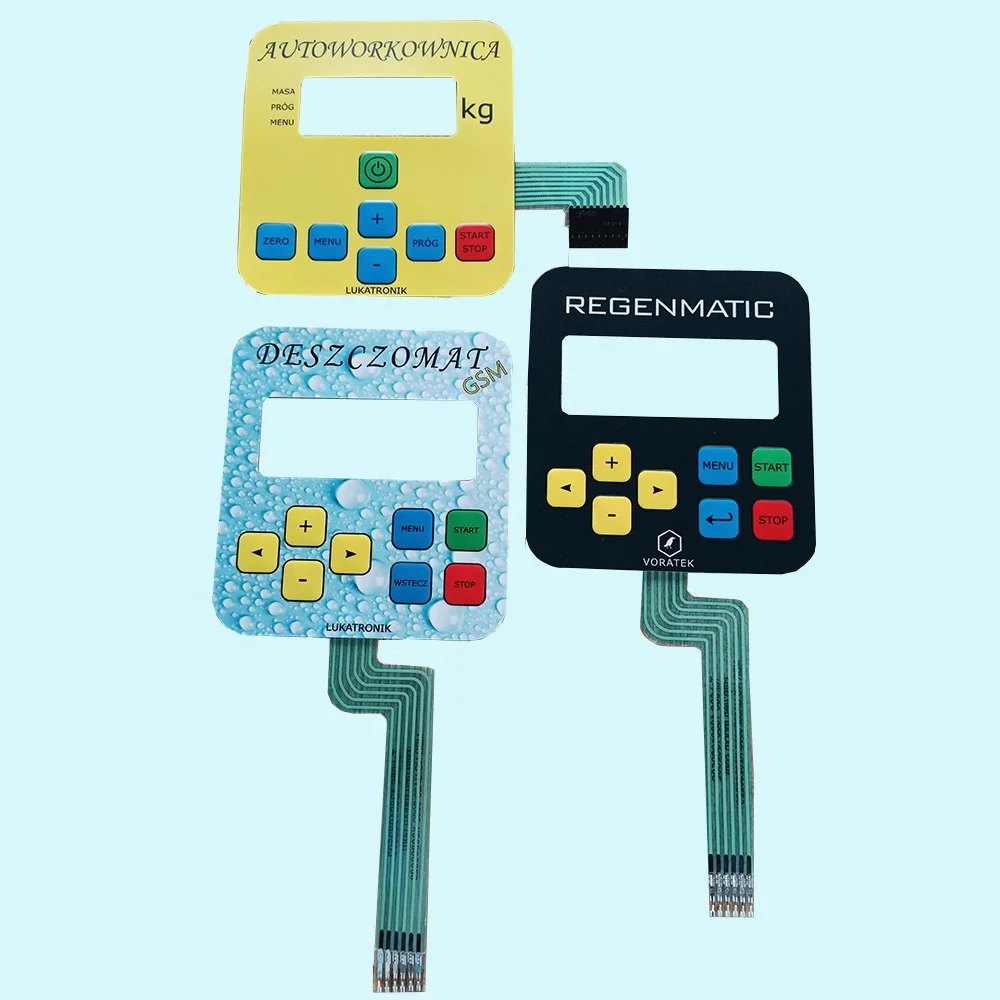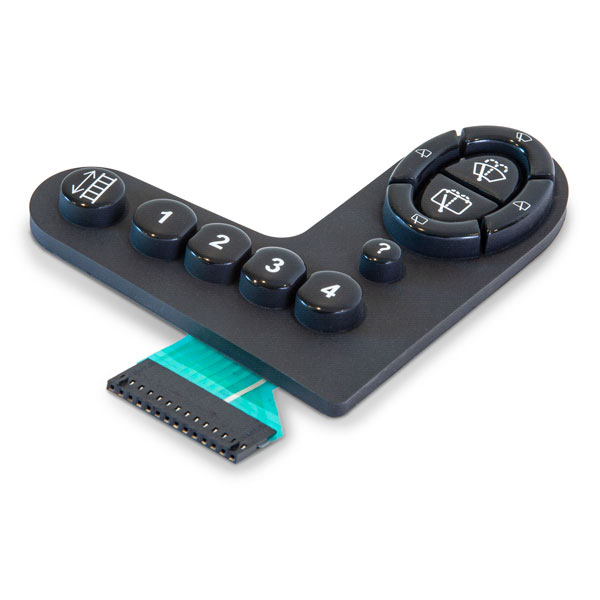Understanding Membrane Switches: The Secret to Resilient and Dependable Controls

What Are Membrane Layer Buttons?
Membrane switches are an advanced option in the realm of individual interface modern technology, combining functionality and design effortlessly. These tools work as a user interface in between customers and digital systems, incorporating numerous components into a small format. Normally created from flexible, thin layers of products, membrane layer switches are created to react to touch, allowing users to communicate with machinery and electronic devices efficiently.
The primary components of a membrane layer button consist of a printed circuit layer, graphic overlay, and a spacer layer that avoids unintentional activation. The graphic overlay can be personalized to show brand identification or customer choices, improving looks while guaranteeing usability. Membrane buttons are frequently used in numerous applications, consisting of medical devices, customer electronic devices, and industrial devices, owing to their toughness and resistance to ecological elements such as moisture and dirt.
One of the key advantages of membrane buttons is their ability to withstand damage, making them suitable for high-traffic atmospheres. Additionally, they are lightweight and call for very little area, enabling for ingenious styles in item growth. On the whole, membrane switches represent a useful and reliable selection for contemporary digital interfaces, marrying technology with user-centric style concepts.
Just How Membrane Switches Over Job
The operation of membrane switches over hinges on a simple yet efficient system that translates customer input right into digital signals. These switches are composed of numerous layers, usually consisting of a visuals overlay, a spacer layer, and a circuit layer. When an individual presses the switch, the leading layer flaws, allowing a conductive component in the circuit layer to reach a corresponding conductive pad on the bottom of the graphic overlay. This call closes the circuit and sends a digital signal to the tool, suggesting that the switch has been activated.
The layout of membrane switches can vary, however they commonly include domes or responsive aspects to offer feedback to the user, enhancing the general experience - membrane switch. The products made use of in membrane layer switches, such as polyester or polycarbonate, add to their toughness and resistance to ecological elements, including dampness and dust. The published circuits are usually encapsulated, which safeguards them from wear and tear over time.
Benefits of Membrane Layer Switches

Furthermore, membrane layer switches are understood for their resilience. Constructed from durable materials, they are resistant to dust, wetness, and physical wear, which significantly prolongs their life expectancy compared to conventional mechanical switches. This resilience makes them specifically appropriate for high-traffic atmospheres and applications needing longevity.
Another significant benefit is the page simplicity of cleansing and maintenance. The smooth surface area of membrane switches over lessens dirt accumulation and is typically unsusceptible spills, making them excellent for setups that need constant sanitization.
Furthermore, membrane buttons use a structured profile, leading to a thinner design that can be integrated right into numerous devices without including mass. This feature not just improves the visual charm however also adds to a more ergonomic item layout.
Applications of Membrane Layer Switches
Easy to use and flexible, membrane layer switches find applications across a wide variety of sectors, consisting of clinical tools, consumer electronics, and commercial tools. In the clinical field, these buttons are essential to gadgets such as analysis devices, individual monitoring systems, and mixture pumps, where reliability and simplicity of cleaning are crucial. Their capability to hold up against extreme atmospheres and keep performance makes them perfect for such applications.

In consumer electronic devices, membrane switches are utilized in products like microwaves, washing equipments, and push-button controls - membrane switch. Their sleek style enables for user-friendly interface, boosting the general individual experience while supplying longevity and resistance to deterioration
Industrial equipment additionally takes advantage of membrane buttons, particularly in control panels for machinery and automation systems. These switches provide security versus dirt and dampness, ensuring regular efficiency in tough settings. Their customizable attributes enable producers to customize them to certain operational needs, boosting efficiency and performance.
Selecting the Right Membrane Layer Change
When choosing a membrane button, it is vital to consider various variables that affect performance and viability for certain applications. The key considerations include ecological problems, responsive comments, sturdiness, and style specifications.
First, examine the operating setting; switches exposed to dampness, chemicals, or extreme temperatures need particular materials to guarantee long life and functionality. Next, evaluate the demand for tactile responses. Relying on individual communication, some applications might gain from a tactile response linked here to verify activation, while others might choose a non-tactile layout for aesthetic reasons.
Longevity is another critical aspect; membrane switches ought to be designed to stand up to regular usage, effects, and abrasion. Make certain the picked button can endure the anticipated lifecycle, specifically in high-usage scenarios.

Verdict
In conclusion, membrane switches offer as crucial components in the style of trustworthy and sturdy control systems throughout various markets. The flexibility of membrane changes enables for customized remedies that satisfy specific functional demands, reinforcing their importance in modern technology.
Membrane layer changes stand for a vital facet of modern-day user interface style, blending functionality with strength in different applications.Membrane layer switches are an advanced service in the check out here realm of individual interface modern technology, combining functionality and style flawlessly. Usually created from adaptable, slim layers of materials, membrane switches are made to react to touch, enabling individuals to connect with equipment and electronic gadgets properly.
The style of membrane layer buttons can vary, yet they frequently integrate domes or responsive aspects to give comments to the user, boosting the overall experience.In conclusion, membrane changes offer as essential parts in the layout of reputable and durable control systems throughout different industries.